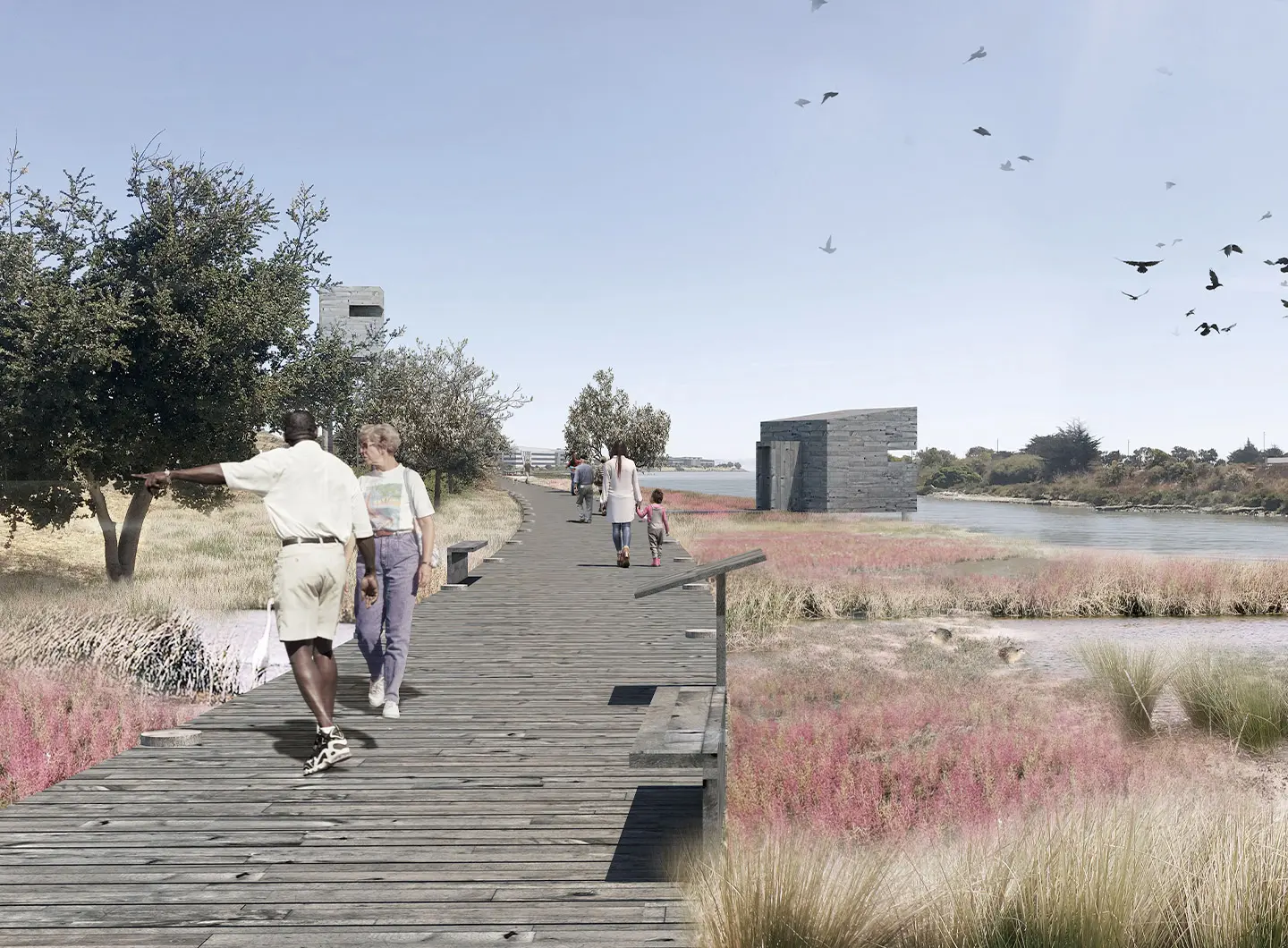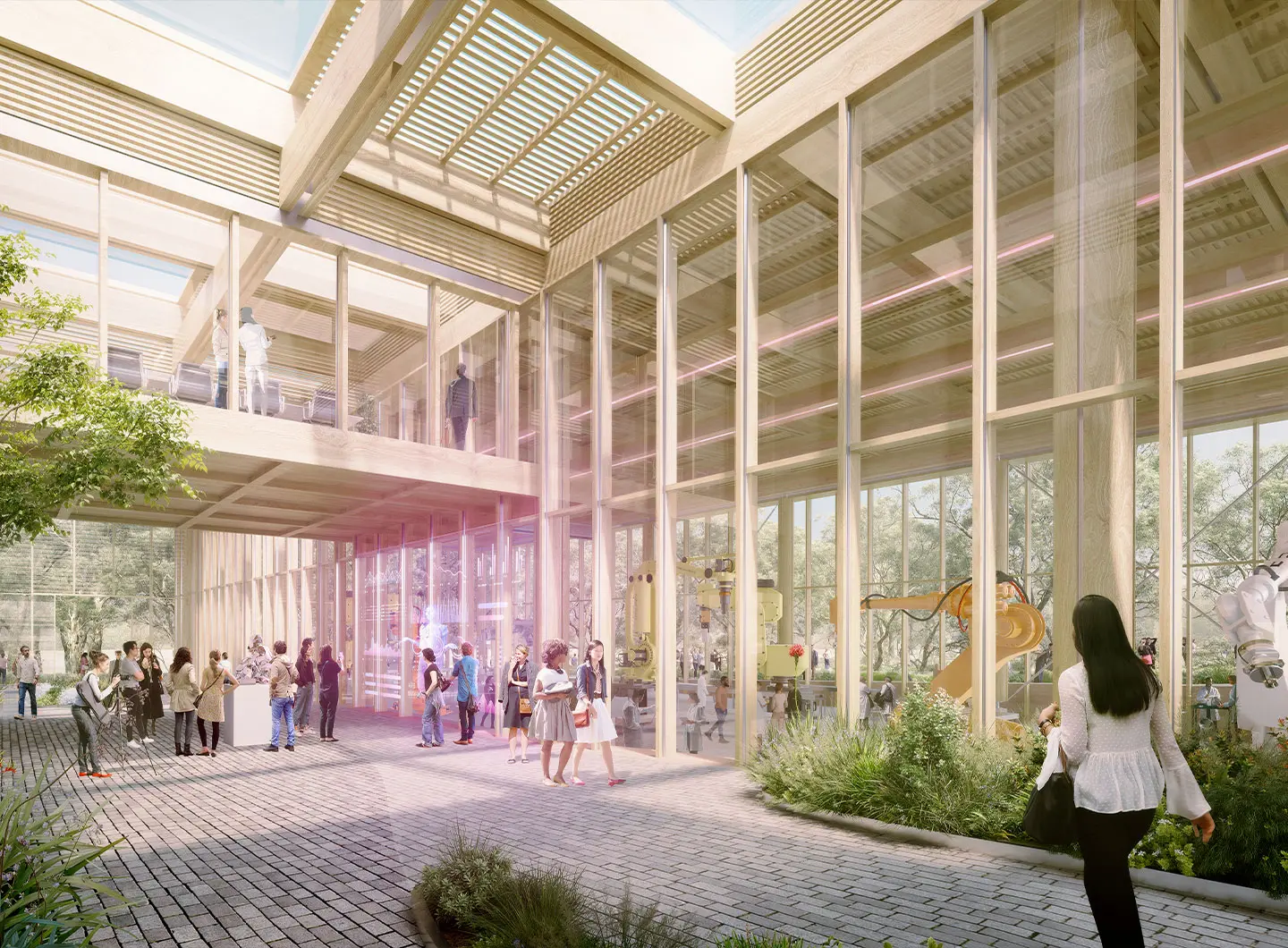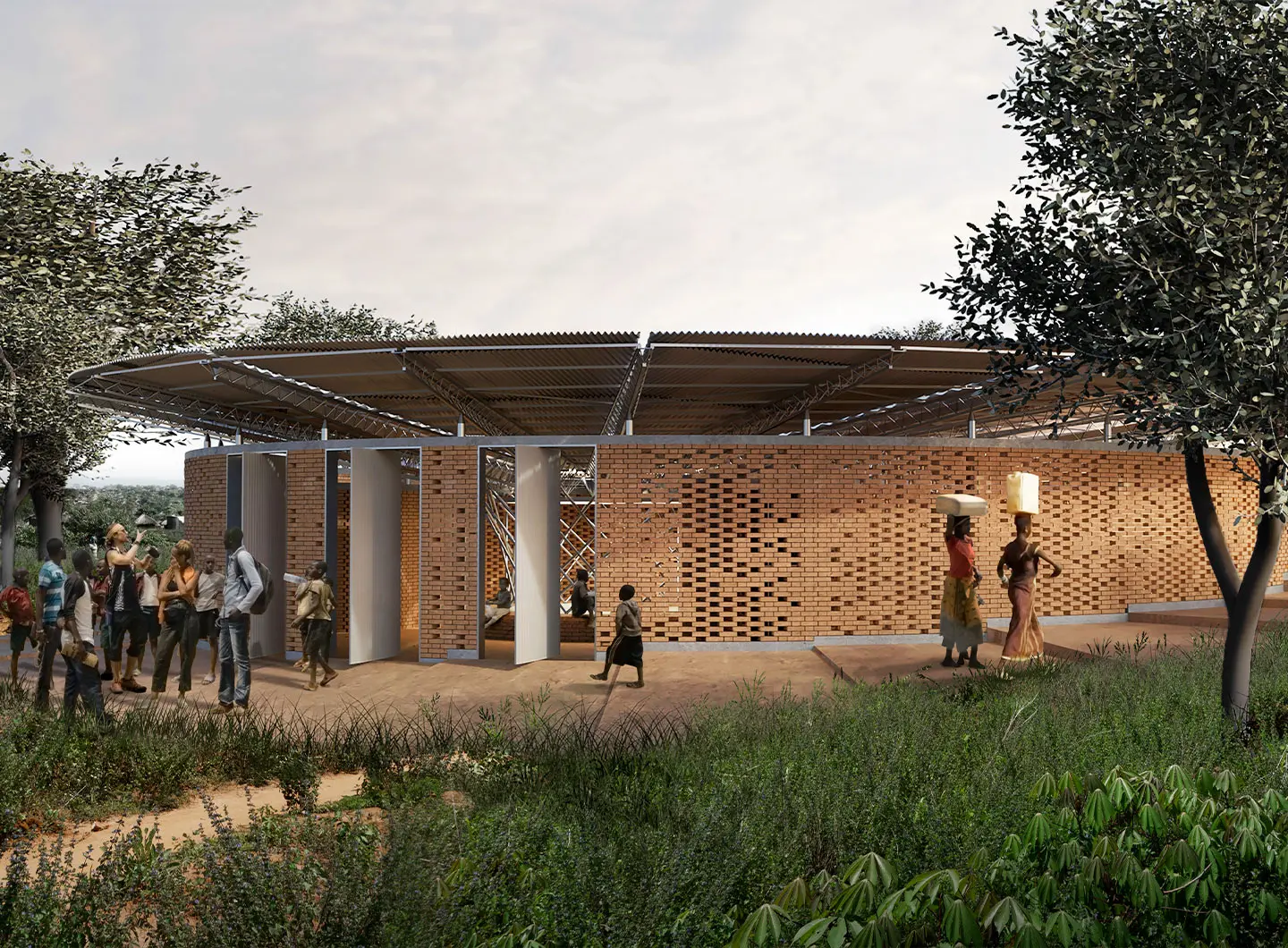Smart and sustainable purchases: how to make the most of the appliance bonus and how to apply. Requirements, amounts and limits to be aware of

First Light Pavilion, Hassell, Macclesfield, UK - Ph. Hufton and Crow
A letter from Liz Westgarth, Managing Director of the multidisciplinary firm founded in 1938 in Adelaide by Philip Claridge, Colin Hassell and Jack McConnell
Improving the human experience
At Hassell, our work transcends boundaries and spans diverse industries, regions, continents —and even planets — reflecting our commitment to improving lives.
Our design for the First Light Pavilion at Jodrell Bank in the UK ignites a sense of wonder about outer space in new generations. Bidi Bidi Arts and Music Centre in Uganda — located within one of the world's largest refugee camps — is a powerful example of humanitarian architecture where having a place to sing, dance and come together has "stopped people fighting".
Our regeneration project at Colma Creek in San Francisco's Bay Area connects and engages communities while fostering advocacy for local wildlife. In Shanghai, our ecological transformation of West Bund has revived the riverfront, making it a favourite destination for relaxation and recreation. In Australia, our design for the Melbourne Arts Centre Precinct is evolving the connection between culture and nature on the doorstep of the city's central business district.
These projects, and countless others, showcase Hassell's commitment to a better future through inspiring spaces that improve lives and nurture nature.
Read also: Hassell Studio on a more resilient and sustainable urban architecture
Designing the world’s best places — places people love
When we say we want to create a better future by designing the world's best places — places people love — it's a very purposeful statement. It's also deceptively simple. We really do place an enormous emphasis on putting people at the centre of our design process and then measuring the impact, outcomes and value these places create for people and communities — all communities, from humans and animals to plant life.
As designers, my generation and the generations of designers to come must focus all our efforts on addressing issues such as social inequality, climate change, urbanisation, and the impacts of digitisation. These challenges can seem almost overwhelming but because designers have consistently helped clients and communities address complex concerns, they're opportunities for us to make the most significant difference.
It's never been more urgent for us to advocate for designers to be part of the solution for the issues we're all facing right now. That's been a huge focus for me, and it guides what we need to do as a business to support a positive legacy for the next generation and the environment. Navigating these challenges and opportunities for a better future is what made me want to become a designer and business leader. It motivates me, and I know my colleagues at Hassell share my passion. Like me, they want to be part of creating a better future by designing places people love.
Connecting people with the place they are in, creating emotionally resonant spaces and places that deserve to be described with emotions like love, is what we're all about.
Rethinking the conventional: the shift from sustainable to regenerative design
The journey toward regenerative design at Hassell — a move from merely sustaining ecological, social and economic systems towards regenerating them so people and nature are thriving together — is characterised by relentless experimentation, a solid commitment to intelligent material management and innovative projects. Pursuing zero waste is part of this transformative journey that requires us to rethink the conventional design trajectory. It's a journey that necessitates a strategic commitment to intelligent material management from the very start of a project to its completion.
This shift is forward-looking and absolutely essential. Achieving a zero-waste future cannot be solved by architects alone. Experts across design disciplines — from products to engineering, fashion and materials — must work together to achieve zero waste and circularity. We have a business and moral imperative to facilitate conversations and foster cross-collaboration to drive this change within the design industry.
As to the built environment, research indicates that a staggering 80% of the buildings that will be in use in 2050 have already been erected. With this in mind, architects must champion radical reuse to adapt existing buildings, but we must also create new structures that can be easily disassembled and modified to meet future needs. Both avenues require meticulous planning and design solutions across multiple dimensions.
Learning through experimentation
We embrace the ethos of learning through experimentation. Our Design Innovation Team, based in our London studio, collaborates with teams across the practice on a series of lighthouse projects that push the boundaries of what is possible. By operating within design constraints and adhering to circular economy principles, our endeavours serve as catalysts for innovation and sources of inspiration that resonate throughout our broader practice. Our journey towards regenerative architecture is marked by remarkable projects that exemplify our commitment to intelligent material management. For instance, our 3D Printed Pavilion, crafted from recycled hospital waste using the latest 3D printing technology, is a testament to our dedication to adaptable and resilient design. This structure, built in London, is engineered to withstand diverse climatic conditions and embodies the essence of innovation.
Towards a regenerative future
Similarly, we've taken on the challenge of sourcing construction materials exclusively from non-virgin sources to extend an existing structure, as seen in our design for Oru, a co-working, event and wellness space in the UK. This approach to design represents a shift toward more regenerative, environmentally responsible practices. These smaller-scale projects serve as proof of concept and inform our architectural endeavours on a larger scale, setting the stage for a more regenerative future in construction and design.
Our commitment to regenerative design extends to envisioning buildings that can be disassembled, expanded, or even relocated. This concept offers a circular lifecycle for our built environment. For example, Hassell's AMRF First Building in Sydney, Australia, is conceived as a 'kit of parts' where the timber structure comprises modular components that are mechanically fixed together, significantly reducing construction time and cost. Importantly, this design approach enables the future disassembly or adaptation of the building and its components into other structures, embodying the core principles of sustainability and resilience. These efforts are not just shaping our practice; they're shaping the future of architecture, a future that is environmentally, socially and economically responsible, adaptable and built to last.
Designing tomorrow: navigating the intersection of AI, sustainability and inclusivity
AI will challenge the design industry. Already, we're able to quickly generate different options into diverse parameters, but right now, AI cannot think in ways that create emotionally resonant spaces and places. This is where our real value as designers becomes even more important. Using AI as part of our work means that designers and design firms can spend more time on the higher-value aspects of the design process — which is something to celebrate and work toward.
When it comes to sustainability, design firms must examine how and where they are investing in regenerative design — across social, economic and environmental pathways. Are we working in partnership with our clients, industry, and communities to educate, advocate and create change while investing in fast-moving technology? Who else in the ecosystem of creating spaces is in a better position than designers to make the changes we need to see?
As architects and designers, we also need to prioritise the wellbeing of our team members. Hassell's recently updated parental leave policy caters for all parents, irrespective of their role as primary or secondary carers, to ensure a positive work-life balance for our people and their families. Our renewed Parental Leave Policy marks another stride towards our gender equity commitments. This isn't just about Hassell; it's about setting an inclusive and responsive design industry benchmark that mirrors our commitment to breaking down barriers and making impactful change. The parental leave policy is just one of Hassell's policies that supports diversity and inclusion. Another is our focus on cultural engagement. Collaborative, inclusive design can help connect people, their communities, and culture — past, present and future. When designing for an Australian context, making these meaningful and positive connections means respectfully listening to, learning from and working with Australia's First Peoples.
We appreciate that much of the work we do as a practice happens on the traditional land of Australia's First Peoples, who have a lasting connection to Country and have been practicing regenerative principles for tens of thousands of years. Together we are working to embed First Nations Australian perspectives into our design processes and create a culturally safe environment. We aim to improve cultural engagement across our practice, continue to engage in deep listening and authentic collaborations with First Nations people and empower and create opportunities for the next generation of First Nations design talent.


 Stories
Stories




















